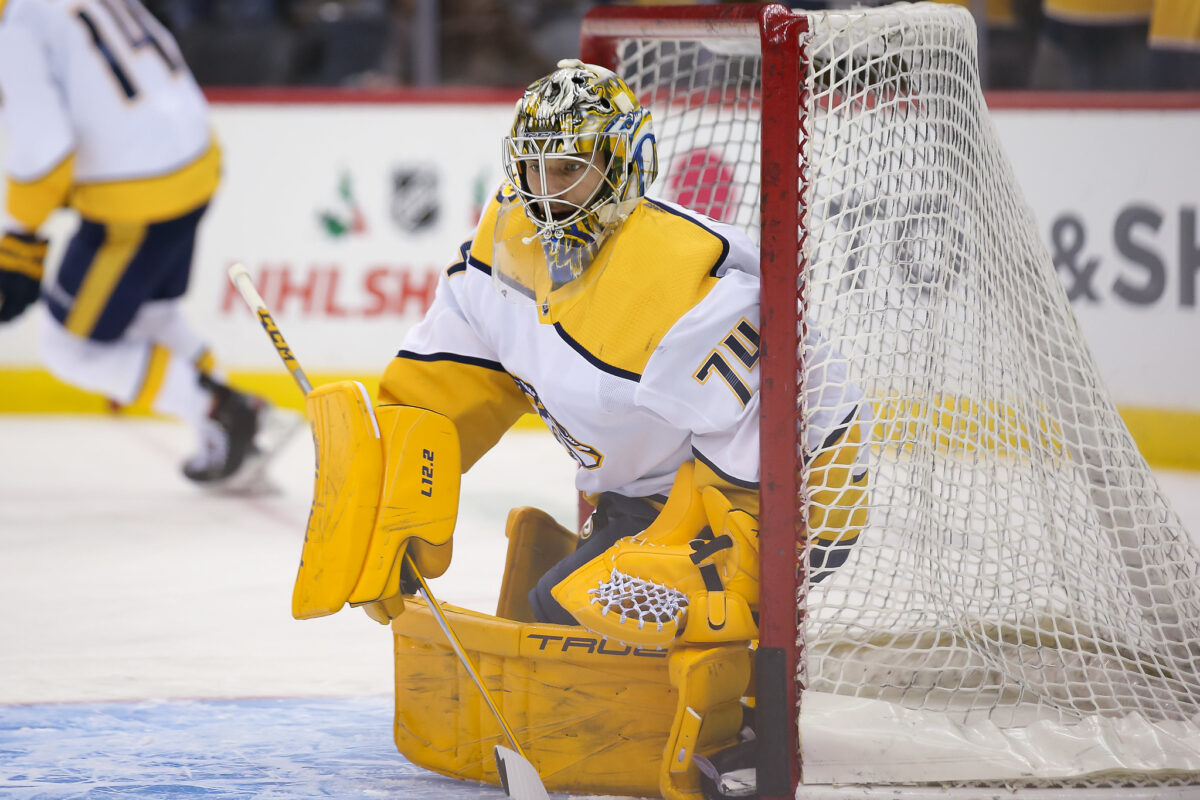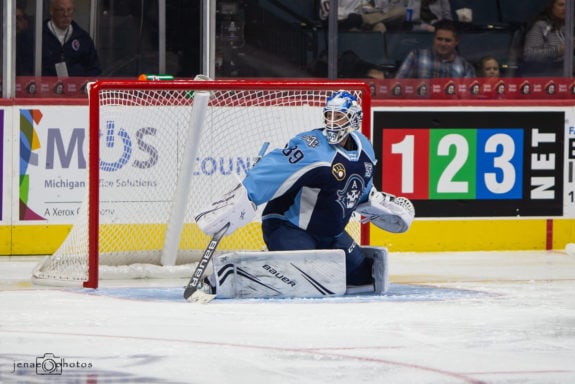It was a sight that left a sinking feeling inside the stomachs of Nashville Predators fans. With under seven minutes remaining in their game against the Calgary Flames, Juuse Saros suffered an apparent ankle injury. Going down the tunnel and not returning, their chances of a strong playoff push may have also gone down. Despite their efforts, a late-game push by the Flames, and a less-than-stellar performance from David Rittich, Nashville couldn’t hold on and eventually lost the game in overtime. The result was secondary, helped by the fact that a Vegas Golden Knights shootout loss helped them clinch their spot in the Stanley Cup Playoffs. What mattered most was the extent of Saros’ injury.
While the team hasn’t confirmed how bad the injury is, several reports indicate that Saros could miss up to four-to-six weeks due to an ankle sprain. While it’s unknown whether his injury is ankle-related, typically, these types of injuries have a timetable of three weeks to two months, depending on the severity. A grade-1 sprain takes around two-to-three weeks to heal and comes with some mild point and joint instability and stiffness. A grade-3 sprain is more troublesome, as it comes with severe swelling and pain, total instability, and loss of motion. The playoffs have showcased players playing through extreme pain, but for goaltenders, side-to-side motion requires a good set of ankles, and even a grade-1 sprain could cause trouble.

With Saros shut down for the last two games of the season, the focus becomes whether he will be available for Game 1 of the opening round. The Predators will be in tough either playing the Calgary Flames or the Colorado Avalanche. Without him between the pipes, their chances are slim-to-none, and they were already heavy underdogs with him being healthy. They do have two 40-goal scorers, a sensational third line headed by a breakout rookie, and a Norris-calibre defenseman, but without Saros, it’ll be difficult to get by either of those teams.
Saros’ Numbers Don’t Lie
When evaluating Saros’ worth to the team, his regular-season statistics and advanced analytics tell the full story. The Predators can score all the goals they want, but a big reason why they’ve made it this far is thanks to the efforts of their 27-year-old netminder. His wins above replacement (WAR) percentage is at 94 on the season, placing him in the higher-tiered goaltenders in the league. His consistency has been unreal, with JFresh Hockey graphs showing a 95 percent rate, while his high-danger, medium-danger, and low-danger goals saved above expected range from 76 percent to 96 percent.
The biggest red flag for Nashville this season is their average penalty kill (PK), which doesn’t bode well as they’re the league’s most penalized team (from ‘Michael Gallagher Predators are living up to their ‘Smashville’ reputation’, Nashville Post, 4/13/22). Still, he managed a passing grade in PK WAR at 67 percent and was a big reason why the Predators’ PK didn’t drop any lower this season. In his first full season as the team’s starting goaltender, Saros has risen to the occasion and become one of the bright spots for the team. Had it not been for the heroics of Roman Josi playing his way into a second Norris Trophy or Matt Duchene and Filip Forsberg becoming the first and second 40-goal scorers in the team’s history, he would be the runaway MVP by a country mile.
Related: Predators’ Fuzzy Goaltending Situation Needs Clarity For Future
Without him, the Predators’ options are limited. Rittich has shown an inability to be consistent at the NHL level, even as a backup, and Connor Ingram has a career total of two games under his belt. Yaroslav Askarov is likely heading to North America following the completion of his season with St. Petersburg SKA of the Kontinental Hockey League (KHL), but he has zero NHL experience. It would be a tall order to ask a 19-year-old to play on North American soil for the first time in a situation like this.
Predators Face Tough Decision Between Rittich and Ingram
In 17 games this season, Rittich holds a 6-3-4 record with a 3.24 goals-against average (GAA) and a .886 save percentage (SV%). They’re not promising numbers by any stretch and only become worse when you factor in the downward trend over the last five years. Rittich went from a capable backup in Calgary who could challenge for a starting position to being exiled from the Toronto Maple Leafs and struggling with his third team in two years. His high-danger scoring chance percentage is at an alarmingly-low rate of .750, conceding 18 goals on 72 chances. In comparison, Saros registered a .831 SV% in the same situation, conceding 47 goals on 278 attempts.

Ingram has looked sharp in Milwaukee this season, registering 30 wins in 54 starts and posting a .915 SV%. His sturdy play helped elevate the Admirals’ late-season push to clinch a playoff spot in the American Hockey League (AHL), and he earned his first NHL win this season. He is untested on the big stage, and it may be expecting too much from the 25-year-old after the workload he’s faced in the minors. He leads the AHL in shutouts (10), starts (54), minutes played (3,195:15), saves (1,541) and shots faced (1,685), and could be the wild card the Predators need if Saros isn’t available.
The expectation is for Rittich to draw in for Game 1 as a trial and see how he holds up under the pressure of the NHL Playoffs. If it fails, as it did during the regular season, head coach John Hynes should lean on Ingram and hope his AHL success can translate to the NHL level. With Saros possibly missing all of the first round, Ingram could become the beacon of hope and help the team out of a tough predicament. If not, it will be a fourth-consecutive first-round exit for the Predators and a year that featured the rejuvenation of several players completely wasted.
